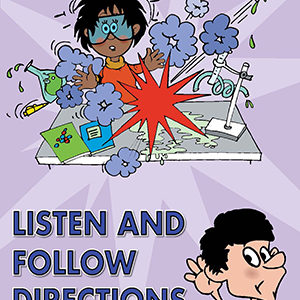by Bill Hadley, UNeMed | Sept. 20, 2012
Why do we have patents?
 According to the U.S. Constitution, the patent system exists to “promote the progress of science and the useful arts.” We can (and should!) argue how effectively the patent system accomplishes this, but the important message here is that, at the end of the day, the patent system is in place to encourage innovation – but innovation by (and for) whom?
According to the U.S. Constitution, the patent system exists to “promote the progress of science and the useful arts.” We can (and should!) argue how effectively the patent system accomplishes this, but the important message here is that, at the end of the day, the patent system is in place to encourage innovation – but innovation by (and for) whom?
The simple answer is the inventor – after all, the inventor is personally incentivized to innovate via the exclusive rights bestowed upon them by virtue of a patent. This is correct, in a sense – but it is not the entire answer. Sure, in the short-run, inventors may be rewarded for their innovation by an issued patent. It is important to remember, however, that the real aim of the patent system is to promote the long-term innovation necessary to advance society as a whole. Rewarding individual inventors is just the short-term means to that long-term end.
The key consideration here is disclosure: a patent rewards the inventor for developing his patented gizmo by prohibiting others from making, using, selling, offering to sell, or importing the patented invention. In addition, patents also reward inventors for disclosing the invention. This is important, because, by disclosing the nature of the invention in the patent, the inventor has provided the basis for a future inventor to improve upon the invention. In turn, the future inventor will hopefully disclose their improvement in a patent, which someone else will improve upon and disclose in a patent, and so forth.
The thought behind this innovation loop is that, by promoting inventors to disclose their innovations to the public, we foster greater overall innovation, which, in the aggregate, benefits society.
As you may recall, trade secrets operate in a manner very similar to patents. That is, in certain circumstances, a trade secret gives its holder the exclusive right to use the trade secret information. Apart from that basic principle, trade secrets and patents are very different because trade secrets don’t require disclosure – in fact, they prohibit it. In other words, trade secrets are not intended to promote societal advancement, they are intended further only the interests of the trade secret holder.
 So is it better to have a trade secret or a patent for an invention?
So is it better to have a trade secret or a patent for an invention?
Society – as reflected by Congress and the USPTO – would certainly prefer that inventors patent their inventions. This is demonstrated by the strong rights given to patent holders and the restrictions in place on trade secrets (e.g. maintenance of secrecy and the possibility of reverse-engineering). In many ways, patents are designed to incentivize innovators not to use trade secrets. Nevertheless, in some circumstances, a trade secret is a perfectly viable option for an inventor.
To illustrate the competing nature of patents and trade secrets, consider the following hypothetical invention
The Hadley Widget
Let’s say, for example, that I have just invented a promising new invention which we will call, somewhat uncreatively, the Widget. (Note that it does not matter what the Widget is, only that it is subject-matter which is eligible for patent protection under 35 U.S.C. § 101.) The Widget is quite valuable and I have decided to build a company around it and make my fortune. Before doing anything else, however, it behooves me to consider the best way to protect the Widget from a competing firm – either by applying for a patent or keeping it a trade secret.
If I elect to pursue a patent, I will have to disclose the innovative concepts of the Widget to the public and pay substantial filing and attorney’s fees in order to obtain the patent. In return, in approximately 2-4 years – if a patent is eventually issued – I will have (relatively) dependable exclusive rights to the Widget for a period of 20 years from the date of my application. Thereafter, competitors will be free to use the widget to compete with my company.
 On the other hand, if I elect to maintain the Widget as a trade secret, I will not need to pay any fees nor will I need to file any documents. Moreover, so long as the innovations of the Widget remain secret, my exclusive rights will exist in perpetuity. In return, I will have to implement policies within my company that are “reasonable” (whatever that is in my jurisdiction) to maintain the secrecy of the Widget. I will also have to accept that if anyone ever legitimately reverse-engineers or otherwise uncovers the innovative aspects of the Widget, I will immediately lose my exclusive rights to it.
On the other hand, if I elect to maintain the Widget as a trade secret, I will not need to pay any fees nor will I need to file any documents. Moreover, so long as the innovations of the Widget remain secret, my exclusive rights will exist in perpetuity. In return, I will have to implement policies within my company that are “reasonable” (whatever that is in my jurisdiction) to maintain the secrecy of the Widget. I will also have to accept that if anyone ever legitimately reverse-engineers or otherwise uncovers the innovative aspects of the Widget, I will immediately lose my exclusive rights to it.
With that in mind, here are a few considerations I need to take into account before determining which scheme is more beneficial to me:
- How easy is the Widget to reverse-engineer? If the Widget is something easily reproduced or understood by a consumer (e.g. a paperclip or thumbtack), I should probably elect to get a patent. Conversely, if the Widget is something which, even if widely used, is difficult to precisely gain knowledge of (e.g. WD-40 composition, software source code), a trade secret may be in order.
- How much have I invested in the Widget? Depending on the amount of funding I’ve received (or am attempting to get), it may be wiser to pursue a patent due to the relative certitude of patent enforceability (unlike that of the trade secret). Conversely, if the invested amount is significant, I may feel that I need 20+ years to recoup my investment. In that case, I might be willing to risk a trade secret (and I should probably review my business model!).
- What is my market window? If the widget is only likely to be valuable for a few years or less, it might be smarter to go with a trade secret due to the delay and costs inherent to the patent application process. Moreover, the odds of the Widget being reverse-engineered or otherwise legitimately revealed in such a short window are dramatically smaller.
- How confident am I in the Widget’s patentability? If I apply for a patent and it is subsequently rejected by the USPTO, the patent application will still be published to the public – thereby destroying any ability I have to keep the Widget a secret (note: this is why recipes are usually protected by trade secret).
- How confident am I that I can build a brand around the trade secret information? Imagine if, by some miracle, the Google search algorithm was uncovered by Microsoft and was subsequently implemented in Bing, such that Google and Bing search results displayed identical results. Does anyone believe Bing would become a legitimate competitor to Google in that circumstance? Likely not, based on the strength of Google’s brand, its existing market share, and the functionality of its peripheral components.
In this case, the Google search algorithm’s secrecy bought Google the time it needed to establish a strong brand, customer loyalty, and market share without the necessary investment or delay incumbent in a patent application. If I think that I can build a brand around the Widget which can sustain a company outside the market advantage gained by a patent or trade secret, due to the lower entry costs of obtaining a trade secret, it might be an attractive option.
 Do patents really foster innovation for society as a whole? This is a difficult question, and rational minds can certainly differ as to the answer. Nevertheless, it can be fun to play the “what if…” game to try and wrestle with complex issues like this.
Do patents really foster innovation for society as a whole? This is a difficult question, and rational minds can certainly differ as to the answer. Nevertheless, it can be fun to play the “what if…” game to try and wrestle with complex issues like this.
So, what if, for example, Coca-Cola had elected to patent their recipe for a soft drink instead of keeping it as a trade secret?
It is entirely possible that, today, the soft drink industry would be quite different. For example, instead of a variety of different flavors/brands of soft drinks (e.g. Mountain Dew, Dr. Pepper, Root Beer, Grape Soda), we might have been stuck with four or five firms producing a cola which tastes identical to a Coke. Once the Coke patent had elapsed, what would have been the incentive to innovate or invest away from a formula which is proven to be the most popular in the market?
This is an example of an industry where a trade secret didn’t hinder innovation – instead of many firms trying to emulate the “Coke experience,” rival firms have been forced to innovate in ways to differentiate themselves from the secret coke formula. This has resulted in more competition and greater variety for the consumer. Or, stated another way, a societal improvement in the soft drink industry.
On the other hand, had the Twinkie recipe had been patented, we might even now find ourselves in a world where multiple Twinkie manufacturers were engaged in a price war to produce the most cost-effective Twinkies. I don’t think any of us would have a problem with that.
If you have any questions or comments, please do not hesitate to contact the author at bill.hadley@unmc.edu or by leaving a comment.
Join us next week when we discuss the key elements of a Copyright.
Nothing in this post should be construed as legal advice. It has been developed by the UNeMed staff as an educational resource for faculty, staff, students, and other personnel associated with the University of Nebraska Medical Center. While all information contained herein has been thoroughly fact-checked, this site is provided on an “as is” and “as available” basis. Neither UNeMed nor the University of Nebraska Medical Center make any representations or warranties of any kind, express or implied, as to the site’s operation or the information, content or materials included on this site. To the full extent permissible by applicable law, UNeMed and the University of Nebraska Medical Center hereby disclaim all warranties, express or implied, including but not limited to implied warranties of merchantability and fitness for any particular purpose. Neither UNeMed nor the University of Nebraska Medical Center will be liable for any damages of any kind arising from the use of or inability to use this site. You expressly agree that you use this site solely at your own risk.











